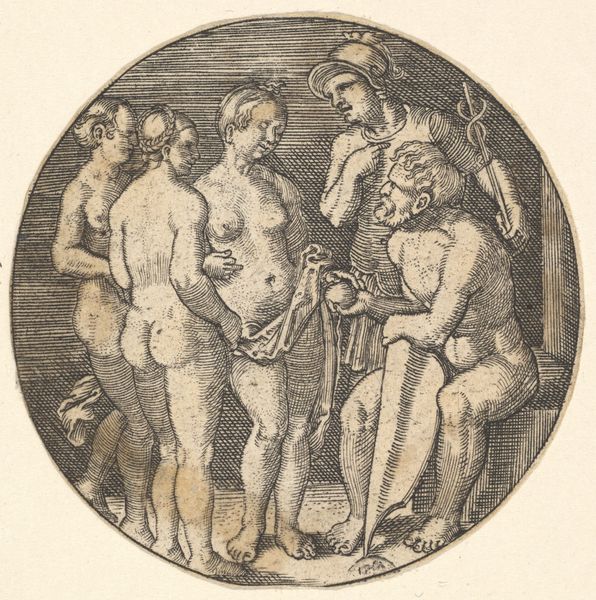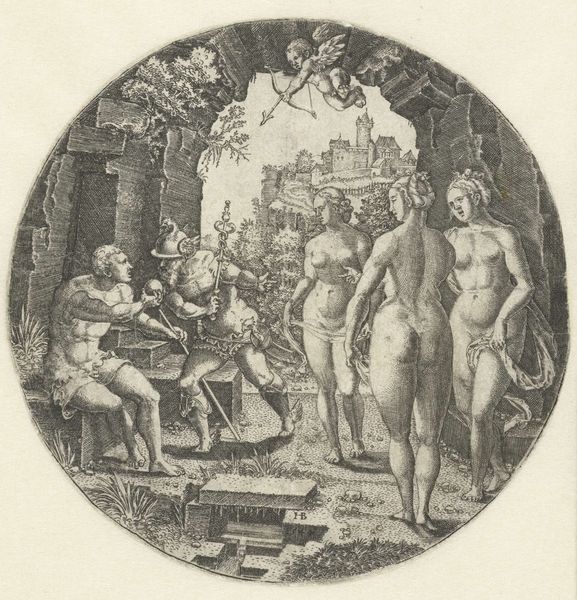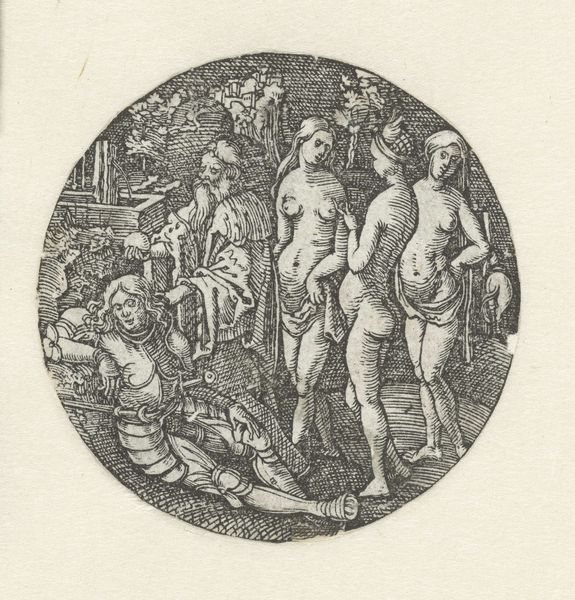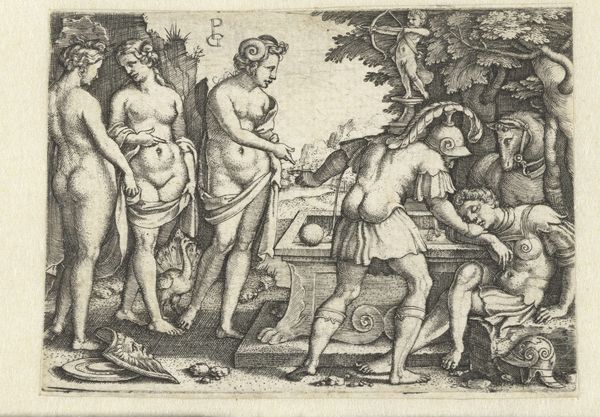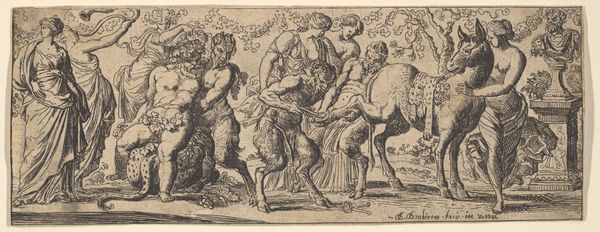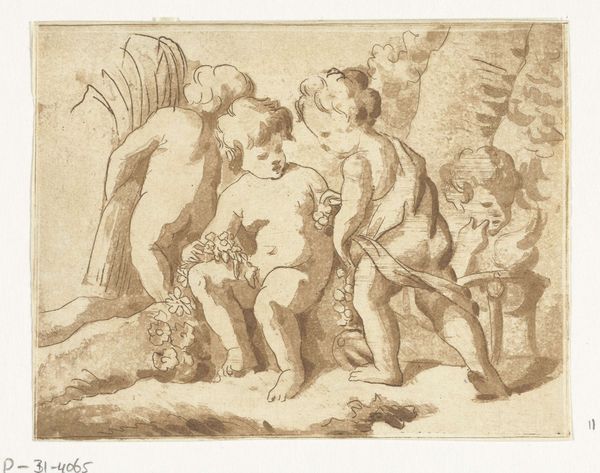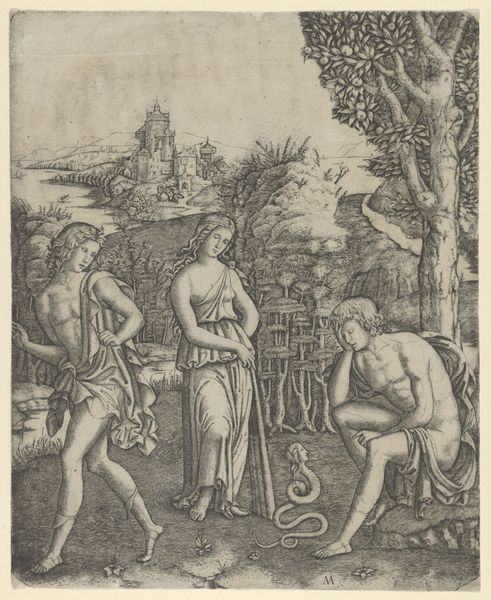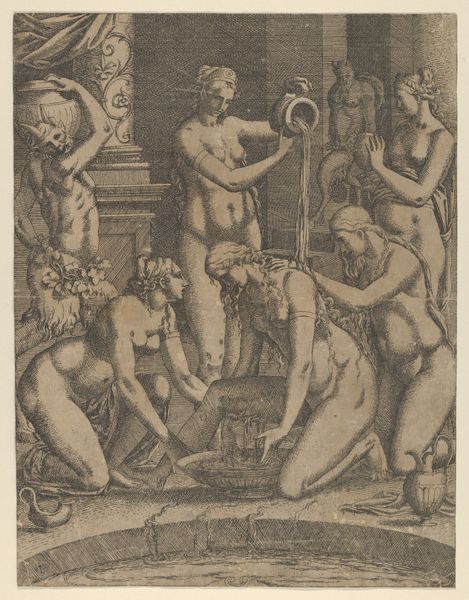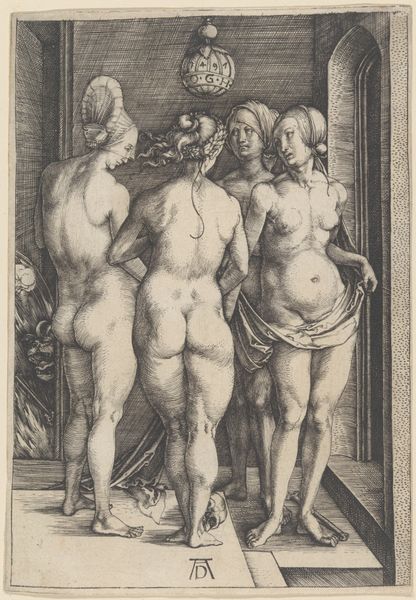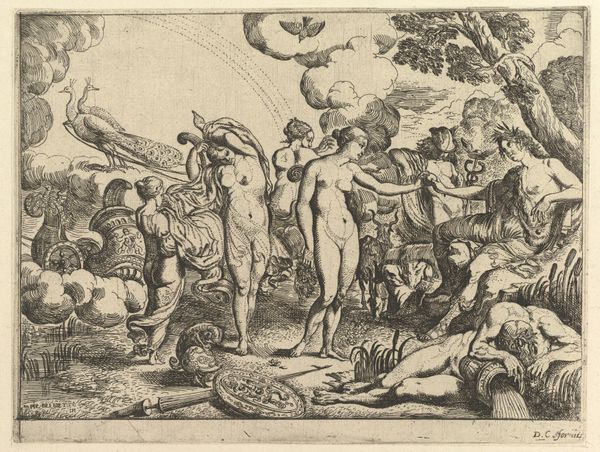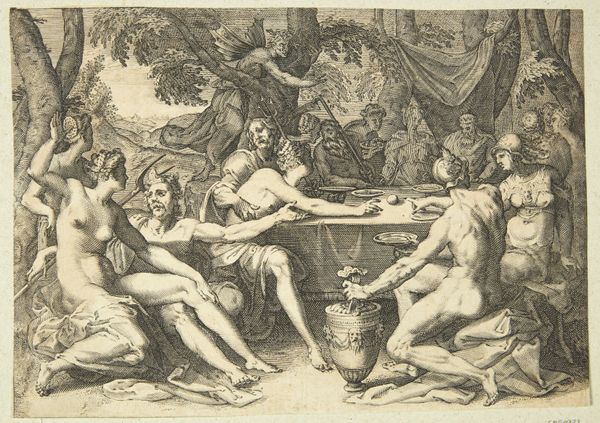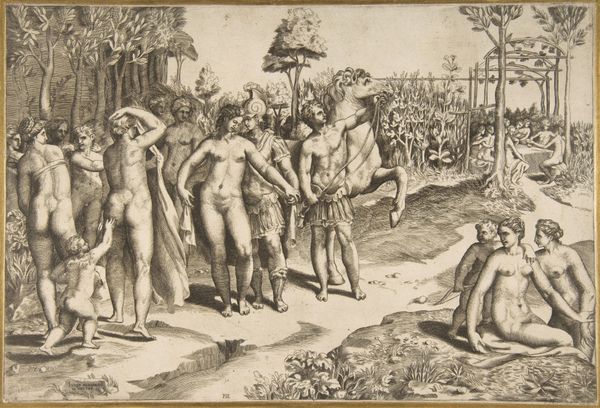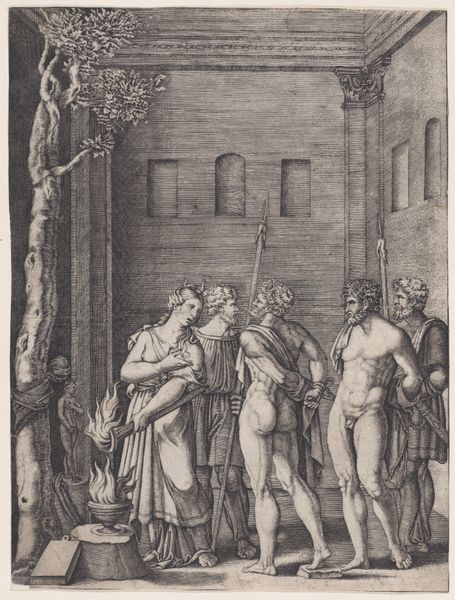
drawing, print, engraving
#
drawing
#
narrative-art
# print
#
greek-and-roman-art
#
old engraving style
#
classical-realism
#
figuration
#
form
#
female-nude
#
orientalism
#
line
#
history-painting
#
academic-art
#
nude
#
engraving
#
male-nude
Dimensions: Diameter: 1 3/8 in. (3.5 cm)
Copyright: Public Domain
Curator: This is "Judgment of Paris," an engraving by Alois Petrak, created sometime between 1825 and 1888. Editor: My first impression is how stark and compact it is; all of these figures are crowded into a small circle, emphasized by the sharply contrasting lines. It’s a pressure cooker of classical mythology. Curator: Indeed. Petrak’s work is a testament to the enduring fascination with classical narratives. The piece encapsulates the pivotal moment when Paris, a Trojan prince, is tasked with choosing the fairest among the goddesses Hera, Athena, and Aphrodite, a decision that, of course, sets in motion the events leading to the Trojan War. Editor: It’s striking how the artist uses line quality to differentiate the figures; the goddesses are rendered with softer lines, lending them an ethereal quality, while Paris and the armored figure – presumably Athena after the judgment – are delineated more harshly, almost as if to visually represent the weight of his decision. It is all about compositional balance in contrast with thematic drama. Curator: Yes, the sharp contrast contributes to the engraving's overall dramatic tension. The choice to depict Athena post-judgment is particularly intriguing. She’s not merely disappointed, but actively disarmed and defeated, perhaps commenting on the futility of war itself. Editor: This piece reflects a broader European interest in both classical and Orientalist themes during that period. How was a central conflict in ancient Greek Myth co-opted in visual and societal representations across Europe? The naked female body presented from a decidedly male perspective reflects complex narratives regarding power dynamics. Curator: Exactly. And we must consider the role of engravings as accessible means of disseminating these historical and mythological narratives. The engraving process allowed for widespread reproduction, contributing to the democratization of art and knowledge. Editor: Thinking about Petrak’s composition, I keep returning to the small size of the artwork. The power dynamic really centers around that golden apple, no larger than your thumbnail, held precariously in the old king’s hand. It feels very symbolic about how small triggers can set the world ablaze. Curator: I see the "Judgment of Paris" now as a microcosm, really. What I once thought was a reproduction is revealed, on close inspection, to be about imbalanced gendered views of conflict resolution. Editor: And for me, thinking about how conflict leads to the destruction of hubris gives this familiar topic new and disturbing depths.
Comments
No comments
Be the first to comment and join the conversation on the ultimate creative platform.
